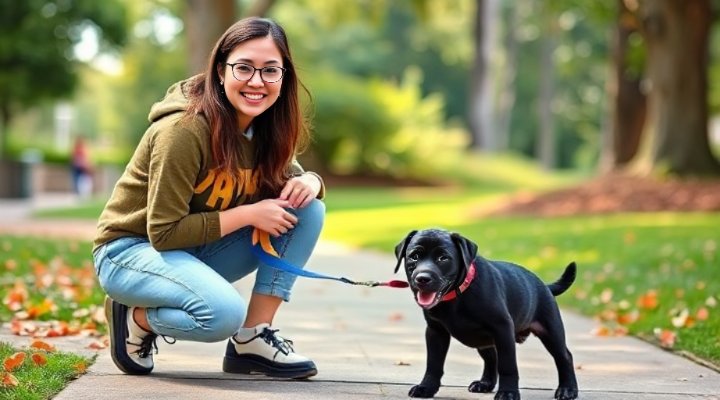Lead training for puppies is one of the most important skills you can teach your furry friend. Not only does it keep them safe during walks, but it also helps build a strong bond between you and your pet. In this comprehensive guide, we’ll walk you through everything you need to know about lead training puppy techniques, from selecting the right equipment to advanced training tips.

Why Lead Training is Essential for Puppies
Before diving into the how-to’s, let’s discuss why leash training for puppies is so crucial. Firstly, it prevents accidents by keeping your puppy from running into dangerous situations. Secondly, it teaches them proper behavior in public spaces. And most importantly, it establishes you as the leader, which is vital for all other aspects of training.
According to the American Veterinary Medical Association, proper leash training can significantly reduce behavior problems in adult dogs. That’s why starting early with your puppy is so important.

Choosing the Right Leash and Collar
The first step in puppy leash training is selecting the appropriate equipment. For young puppies, we recommend:
- A lightweight, 4-6 foot nylon or leather leash
- A well-fitted flat collar or harness
- Avoid retractable leashes for training purposes
If you’re unsure about sizing, check out our guide on choosing the perfect leash for your puppy.
Harness vs. Collar: Which is Better?
This is a common question among new puppy owners. While collars are more traditional, harnesses distribute pressure more evenly and are especially good for breeds prone to tracheal issues. Our article on the best leashes for pulling covers this topic in more detail.

Step-by-Step Lead Training Process
Now, let’s get to the actual training! Follow these steps for successful lead training puppy:
- Introduce the equipment gradually – Let your puppy sniff and investigate the leash and collar before putting them on.
- Start indoors – Begin in a quiet, familiar environment with minimal distractions.
- Use positive reinforcement – Reward with treats and praise when your puppy shows good leash behavior.
- Keep sessions short – Puppies have short attention spans, so 5-10 minute sessions are ideal.
- Gradually increase difficulty – Move to more distracting environments as your puppy improves.
Remember, consistency is key! For more detailed training methods, our guide on training your dog to walk on a leash offers additional tips.

Common Challenges and Solutions
Even with the best preparation, you might encounter some challenges during leash training for puppies. Here are solutions to common problems:
Puppy Refuses to Move
If your puppy plants itself and won’t budge, try:
- Using high-value treats to encourage movement
- Getting down to their level and calling them excitedly
- Making the leash slack rather than pulling
Puppy Pulls Constantly
For persistent pullers:
- Stop moving when they pull (teaches that pulling doesn’t get them where they want to go)
- Change direction frequently
- Consider a front-clip harness
For more solutions to specific issues, the American Kennel Club offers excellent resources on puppy training.
Advanced Lead Training Tips
Once your puppy has mastered basic leash walking, you can move on to more advanced techniques:
- Teaching your puppy to walk politely by your side
- Introducing commands like ‘heel’ and ‘let’s go’
- Practicing in increasingly distracting environments
These skills will be especially helpful if you plan to enroll in puppy obedience classes.
Final Thoughts
Lead training puppy requires patience and consistency, but the rewards are well worth it. A well-trained puppy means enjoyable walks for years to come and a stronger bond between you and your pet. Remember that every puppy learns at their own pace, so don’t get discouraged if progress seems slow at first.
For more puppy training resources, check out our articles on potty training and socialization.
Related Keywords: puppy leash training, how to train a puppy to walk on a leash, leash training for puppies, best leash for puppies, puppy training tips

